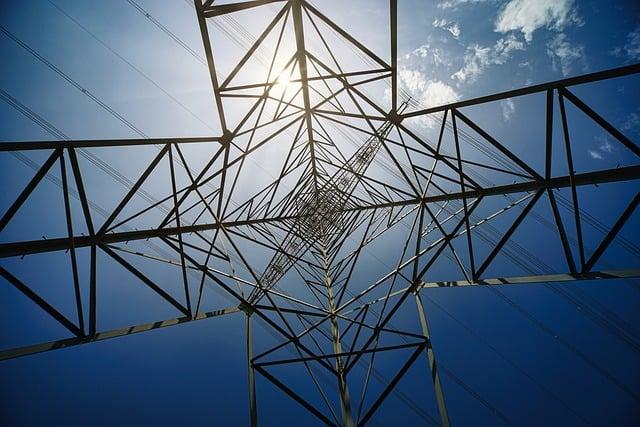in a meaningful move aimed at bolstering regional energy security and promoting economic development, the African Development Bank (AfDB) has approved a financing package of $153.66 million for an enterprising electricity interconnection project between Uganda and south Sudan.This strategic initiative seeks to enhance electricity access in both nations, facilitating the exchange of electrical power and fostering opportunities for trade and investment. As Uganda continues to expand its energy infrastructure and South Sudan grapples with the challenges of rebuilding its economy, this landmark project not only underscores the potential for cross-border collaboration but also marks a pivotal step towards sustainable energy solutions in East Africa.With the backing of the African Development Fund,stakeholders hope to address critical energy deficits,stimulate economic growth,and improve the overall quality of life for millions in the region.
Uganda and South Sudan Collaborate on Energy Security through New Interconnection Project

In a significant stride towards enhancing regional energy security, Uganda and South Sudan are set to embark on a transformative electricity interconnection project, underpinned by a financing commitment of $153.66 million from the African Development Fund. This initiative aims to bolster energy access and reliability for both nations, facilitating cross-border electricity trade that is vital for economic growth. The project is expected to strengthen infrastructure and encourage investments, which will subsequently lead to an increase in job opportunities and improvement in the quality of life for citizens in both countries.
The interconnection scheme will feature several key components designed to ensure effective implementation and sustainability, which include:
- High Voltage Transmission Lines: Construction of robust infrastructure to carry electricity across borders.
- Substations: Development of critical substations to manage energy distribution efficiently.
- Capacity Building: Training programs for local technicians to enhance operational and maintenance skills.
This collaboration not only aims to improve energy access but also contributes to the broader goals of resilience and sustainability in the East African region, fostering unity and cooperation in addressing energy challenges.
Understanding the African Development Fund’s Role in Financing Infrastructure Development

The African Development Fund (ADF) plays a crucial role in driving infrastructure development across the continent, particularly in regions like East Africa where access to reliable power sources remains a significant challenge. By facilitating financial resources for major projects, the ADF enables countries to enhance thier energy infrastructure, ensuring a sustainable supply of electricity. This not only fosters regional connectivity but also supports economic growth and social development, allowing communities to thrive through improved access to essential services.Key benefits of ADF financing include:
- Increased Energy Access: Projects funded by the ADF widen the scope of electricity availability to underserved populations.
- Regional Integration: Infrastructure projects, such as electricity interconnections, promote collaborative development among neighboring nations.
- Job Creation: Infrastructure development leads to employment opportunities, bolstering local economies.
The recent approval of $153.66 million for the electricity interconnection project between Uganda and South Sudan exemplifies the ADF’s commitment to promoting energy security in conflict-affected and developing nations. By underpinning cross-border energy trade, this initiative not only reinforces Uganda’s role as a regional energy hub but also assists South Sudan in addressing its energy shortfall, thereby contributing to stability and growth. Funding through the ADF is structured to provide not just financial assistance but also technical support,which ensures that projects are implemented efficiently and sustainably. The investment is expected to yield significant socio-economic benefits, illustrated in the table below:
| Benefit | Description |
|---|---|
| enhanced Capacity | Increased generation capacity will support both domestic and regional needs. |
| Economic Growth | Stimulates local businesses through reliable power supply. |
| Environmental Sustainability | Facilitates cleaner energy solutions and reduces reliance on fossil fuels. |
Economic Implications of the $153.66 Million Investment in Electricity Interconnection

The $153. between Uganda and South Sudan is poised to bring significant economic benefits to both nations. This strategic project aims to enhance energy access and reliability, paving the way for increased industrial growth and improved living standards. With greater access to electricity, local businesses will have opportunities to expand operations, ultimately contributing to job creation and increased GDP. Moreover, the interconnection is expected to facilitate trade in electricity, allowing surplus energy from one country to be exported to the other, thereby promoting regional integration.
Additionally, the investment aligns with broader economic goals, including sustainable development and climate resilience. By providing a more reliable power supply, the project can also stimulate investment in renewable energy sources, such as solar and hydro power, which are abundant in the region. The anticipated economic implications include:
- Increased foreign investment due to improved infrastructure.
- Boost in local economies through enhanced energy availability.
- Job opportunities in construction, maintenance, and energy sectors.
- Trade enhancement with neighboring countries, leveraging cross-border energy sales.
enhancing Regional Cooperation: Benefits of Increased Energy Access for Uganda and South Sudan

Regional cooperation between Uganda and South Sudan is set to flourish with the recent approval of a significant financing package aimed at enhancing electricity access. By investing in the electricity interconnection project, both countries stand to gain from a strengthened energy framework that promotes stability and economic growth. Increased energy access allows for the development of vital infrastructure, facilitates the establishment of industries, and creates employment opportunities. Moreover, it can significantly contribute to the improvement of health and education services, as reliable electricity is essential for the operation of hospitals and schools. The potential benefits include:
- Economic Growth: Enhanced energy access can stimulate local economies and attract foreign investment.
- Job Creation: The project will generate employment opportunities during both the construction and operational phases.
- Social Development: Improved electricity supply supports various social services, including education and healthcare.
- Regional Stability: Strengthening ties through energy collaboration can foster peace and reduce tensions.
The interconnection project represents not only a technological advancement but also a new era of collaboration between these two nations. By sharing resources and collaborating on energy generation, Uganda and South Sudan are paving the way for a more resilient and sustainable energy future. The project is poised to enhance energy reliability, reduce costs through economies of scale, and mitigate the effects of climate change by promoting cleaner energy sources.Key aspects of the collaboration include:
| Key features | Potential Impact |
|---|---|
| Infrastructure Development | Improved roads and energy facilities |
| Joint Energy Initiatives | Shared expertise and technological advancements |
| cross-Border Trade | Enhanced market opportunities for both countries |
| Environmental Sustainability | Promotion of renewable energy sources |
Recommendations for Successful Implementation of the Electricity Interconnection Project

For the successful implementation of the electricity interconnection project between Uganda and South Sudan, several critical strategies should be employed.Stakeholder engagement is essential at all levels, ensuring that local communities, government entities, and private sector partners are actively involved throughout the project lifecycle. This can be achieved through regular community consultations and clear interaction,which will help mitigate potential conflicts and enhance project ownership among stakeholders. additionally, careful planning and assessment of existing infrastructure will facilitate smoother integration, making it vital to establish a comprehensive infrastructure improvement plan that addresses technical and logistical challenges early on.
Furthermore, prioritizing training and capacity building for local personnel can significantly enhance project sustainability. By equipping local engineers and technicians with the necessary skills, the project can foster long-term economic growth and development. A robust monitoring and evaluation framework should also be established to track progress effectively and adapt strategies as needed. The table below highlights key recommendations for maintaining momentum:
| Recommendations | Implementation Strategies |
|---|---|
| Stakeholder Engagement | Regular consultations and clarity in communication |
| Infrastructure Planning | Assess existing infrastructure for efficient integration |
| Training and Capacity Building | Invest in local workforce development initiatives |
| Monitoring and Evaluation | Establish a framework to assess project progress |
Future Prospects for renewable Energy integration in East Africa Following the Project

The recent approval of $153.66 million by the African Development Fund for the electricity interconnection project between Uganda and South Sudan is a significant milestone that paves the way for enhanced renewable energy integration in East Africa. This venture is poised to create a robust energy corridor, facilitating the efficient exchange of electricity across borders. As a result, the region stands to benefit from a more stable and reliable energy supply, ultimately promoting economic growth and sustainable development.
The project encourages the adoption of renewable energy sources, thereby contributing to environmental sustainability in the following ways:
- Enhanced Grid Stability: Connecting national grids will improve the capacity to accommodate renewable sources like solar and wind.
- Increased Investment: The interconnection will attract investments in renewable projects and infrastructure development across East Africa.
- Job Creation: As new projects emerge, there will be an uptick in job opportunities within the renewable energy sector.
- Regional Cooperation: Enhanced collaboration between Uganda and South Sudan can set a precedent for similar interconnections in neighboring countries.
| Aspect | Impact |
|---|---|
| Energy Security | Improved power reliability and reduced outages |
| Economic Growth | Boost in local economies and businesses |
| Climate Change Mitigation | Decreased reliance on fossil fuels |
concluding Remarks
the approval of $153.66 million in financing from the African Development Fund marks a significant milestone for Uganda and South Sudan as they embark on a transformative venture to enhance their electricity interconnection. This project is not just a testament to the commitment of the African Development Bank to fostering regional collaboration and sustainable development; it is also a critical step toward bolstering energy security and promoting economic growth in both nations. By improving access to reliable electricity, this initiative has the potential to empower communities, attract investment, and pave the way for a brighter, more sustainable future. As the two countries move forward with this essential infrastructure project,it will be imperative to monitor its implementation closely,ensuring that it meets the needs of local populations and contributes positively to the overarching goals of regional integration and development. The successful realization of this project could serve as a model for similar initiatives across the continent, highlighting the crucial role of energy connectivity in achieving sustainable development in Africa.







